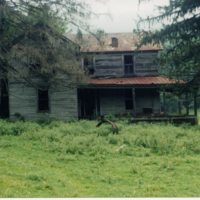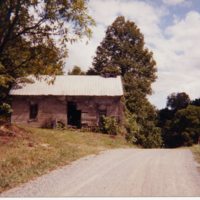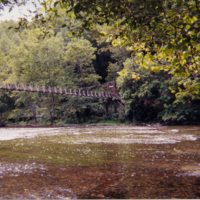Fault Line
Paradise Lost
Lou spent a number of years living along Smith Creek, with her husband, Homer, and several of her husband's relatives in what she referred to as the "black-eyed house." There were also five children. Her husband passed away while the children were still in their teens. These were hard years for Lou and we see this evidenced in Lou's poem "Smith Creek No. 1":
Later, she regretted these harsh sentiments and recanted. Lou's "Smith Creek No. 2" is written as an apology: ""feeling bad about writing Smith Creek No. 1". Smith Creek No. 2 is vintage Lou, joyful, lyrical, playing with language the way she played with nature as a young girl:
What seperates these two views, the one hot and passionate, the other equally passionate but more calm and assured, is Lou's fault line. In geological terms a fault is "a break in rock that shows evidence of differential movement on opposite sides of the break." [Chew, p. 107]. While living on Smith Creek Lou was drawn to a fault line not far from her home (pictured below). Keenly attuned to nature and her surroundings she would visit the site of this geological disturbance with her children looking for fossils. She may have been drawn to it because of some seismic shift in her own consciousness thatwas occuring during this time. Or maybe Smith Creek was Lou's wintertime.
"In Price Hollow, faith taught me to wait out the winter, to smell the odor of peppermint on the cow's breath, or the odor of freshly laundered clothes hung on the line like Dutchman's britches—a flower. Faith took you from the softness of the mole's ear to the softness on the belly of a leaf. Contained in that same softness, one learned years later the answer to the question—what is faith? Part of faith is wait. In the wintertime one learns to wait." [Bloodroot: Reflections on Place by Appalachian Women Writers,(81)]







